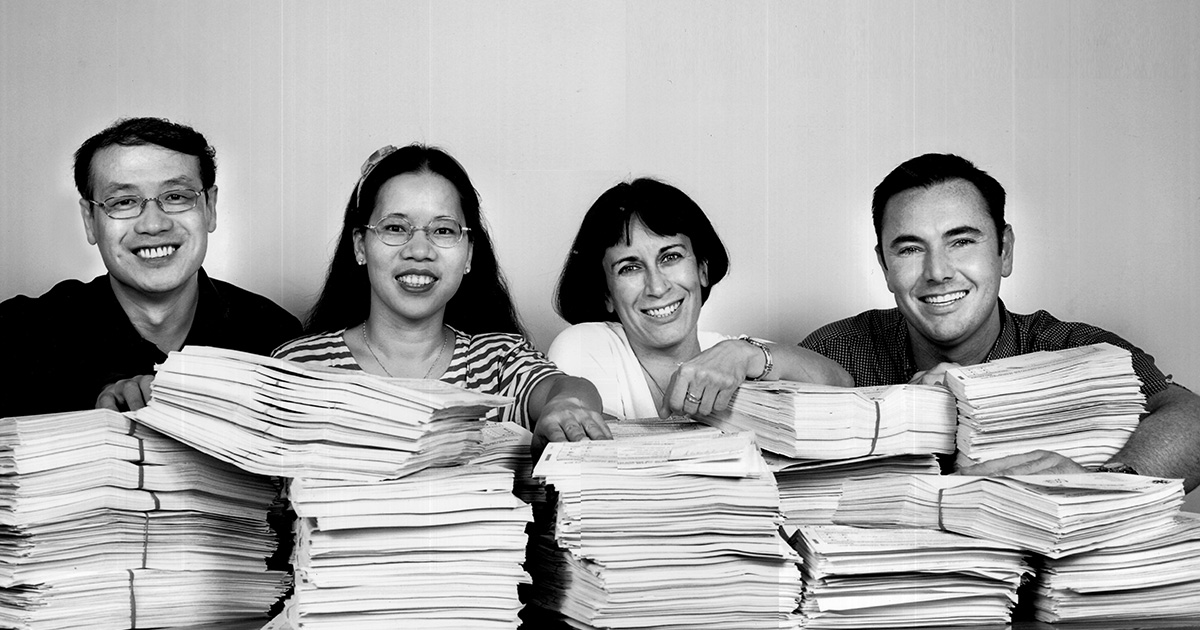The Woolcock Institute of Medical Research

The power of many
The Woolcock’s broad base of expertise – now 12 research groups – has led to collaborations which have made it a place of innovation where solutions that improve people’s lives happen.
“That started with Ann [Woolcock] who was a wonderful critical thinker,” says Associate Professor Brett Toelle, Research Leader of the Respiratory and Environmental Epidemiology research group. “She was always asking ‘where are we going with this?’ It wasn’t enough to say I’m interested in it. It had to relate back to how it would benefit our patients, how it would change practice.”
The research groups that now make up the Woolcock have always worked together, he says, even when they were housed in different locations.
“We were spread across six locations when we were at the University [of Sydney] and [Royal Prince Alfred] Hospital. In the old days, we had Woolcock bicycles to get us between buildings for meetings, long before bike tracks. We always made it happen, it was just much more difficult to make it happen.”
The work done at the Woolcock runs the full gamut from Associate Professor’s Toelle’s work in epidemiology which looks at the big picture – researching health at the community level and investigating risk factors – to the Woolcock Clinic which takes it to a personal level.
Tapping Expertise
That means there is a wide range of expertise to draw on when it comes to answering research questions and, for the past 16 years at Glebe, that has been under the one roof. Cross-group collaboration is facilitated formally through the Woolcock’s seminar programme – focussed on sleep-related topics on Tuesdays and respiratory on Fridays. “That lets you know who’s doing what in the building and then you can follow-up by just going up or down a level. Then there’s the less formal chats you have where people may have a spark of an idea, a lightbulb moment, and want to go and sound someone out and say ‘do you know anything about this?’ or ‘I wonder if we could do something downstairs in our lab on this’.”
“The world has changed hugely in the time that we’ve been at Glebe. People want innovation and creation really quickly and people have to be coming together and throwing ideas around. We have to be agile and turn things around quickly, so being together in the one building has been important.”
A classic example of that is the wind farm study results released in 2023 which required both sleep and environmental epidemiological expertise and stemmed from a conversation between research leaders Professors Ron Grunstein and Guy Marks. The Epidemiology group also worked with specialists in Cell Biology, Allergens and Clinical Management for SAVE (Study of Asthma, Viruses and Environment) in 2013-2014 which looked at the impact viruses circulating in the community have on children’s daily asthma symptoms.
“These things come together because we’re co-located. You can’t underestimate the benefits of working side-by-side with someone and creating that connection with them. You get to know what they’re capable of, what their strengths are and what they bring to the table. And once you’ve collaborated once, you look for the next thing you can work on together, and the next thing.”.
Want to stay up to date with our research on sleep and respiratory conditions?
Sign up to our monthly newsletter
Building on experience
“Associate Professor Toelle also talks about the catalogue of research experience built up at the Woolcock over the years which contributes to what we do today. Researchers at the Centre for Chronic Diseases of Ageing have been able to use questionnaires created for the BOLD study conducted in the 2000s for a new study looking at Chronic Obstructive Pulmonary Disease (COPD), chronic lung disease and sleep and, in doing so, draw on a large Australian dataset to compare their findings against.
There’s also been valuable work done by the Airways Physiology group looking into the mechanisms of lung disease to understand what happens in the lungs with measures of airway resistance and airway inflammation. “The Woolcock has been at the cutting-edge of the forced oscillation technique (FOT) to measure airway resistance and for airway inflammation measurement by forced exhaled nitric oxide test (FeNO), collecting exhaled breath into ‘unused’ wine cask bags and then measuring it on devices built by our Bioengineering group before they were commercially available. We [in Epidemiology] have made a point of collecting FOT and FeNO in all of our studies because it’s an additional parameter that helps tell us how the lungs are working. We’re able to do that because collaboration was easy and we had their expertise to draw on.”
It’s those opportunities and an environment that encourages free thinking that has kept him at the Woolcock for 35 years and feeling like he makes a difference every day he comes to work.










